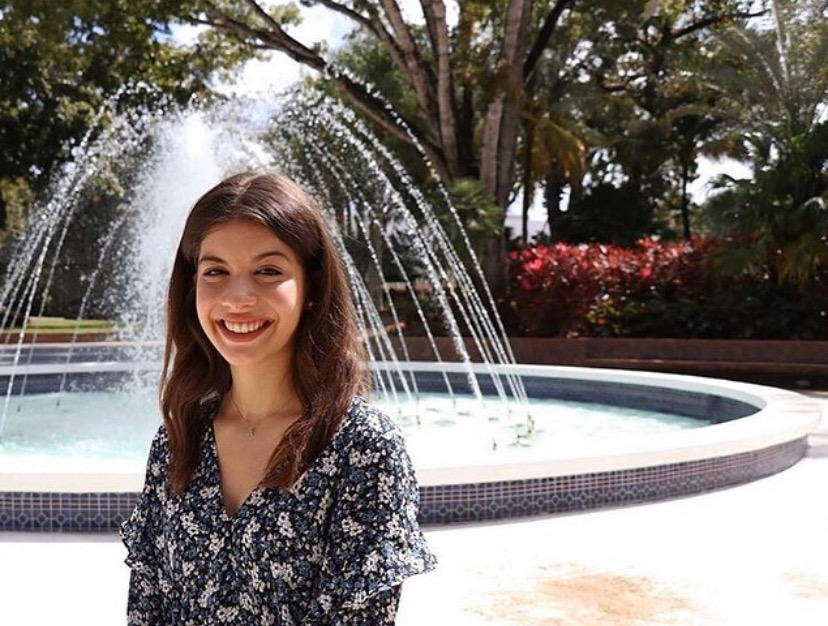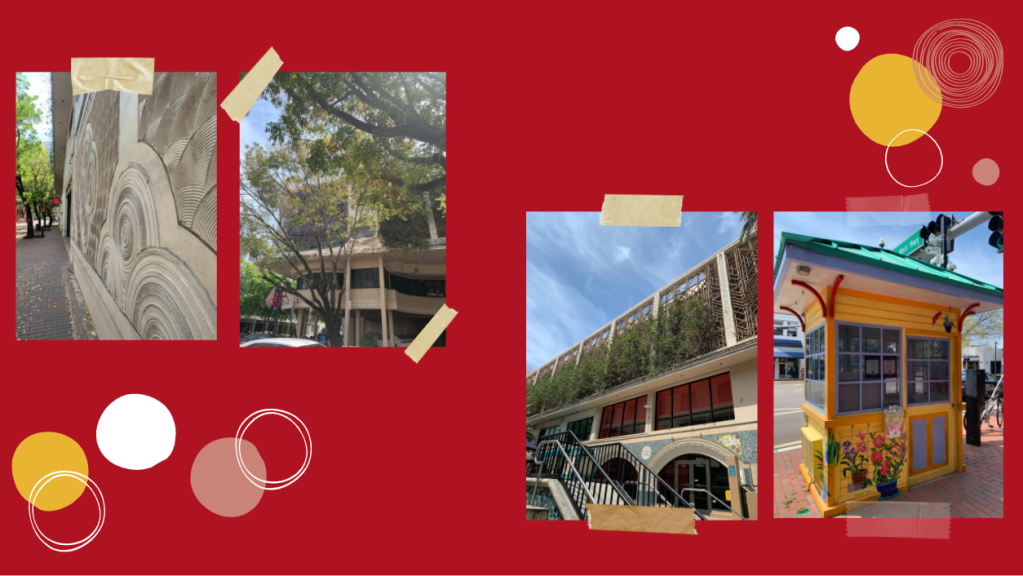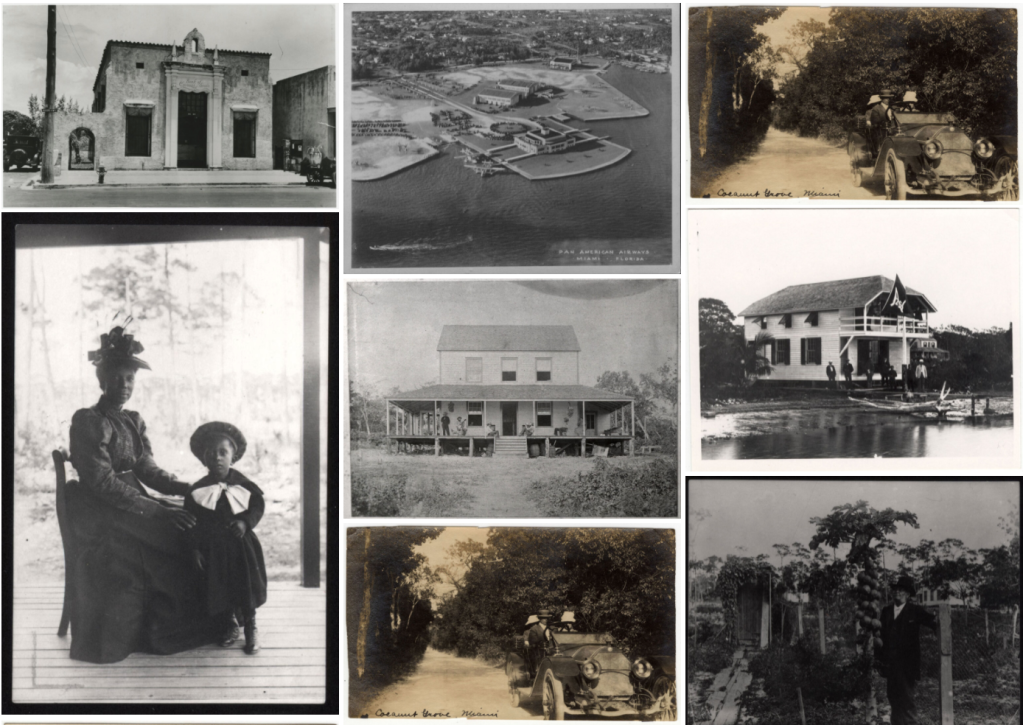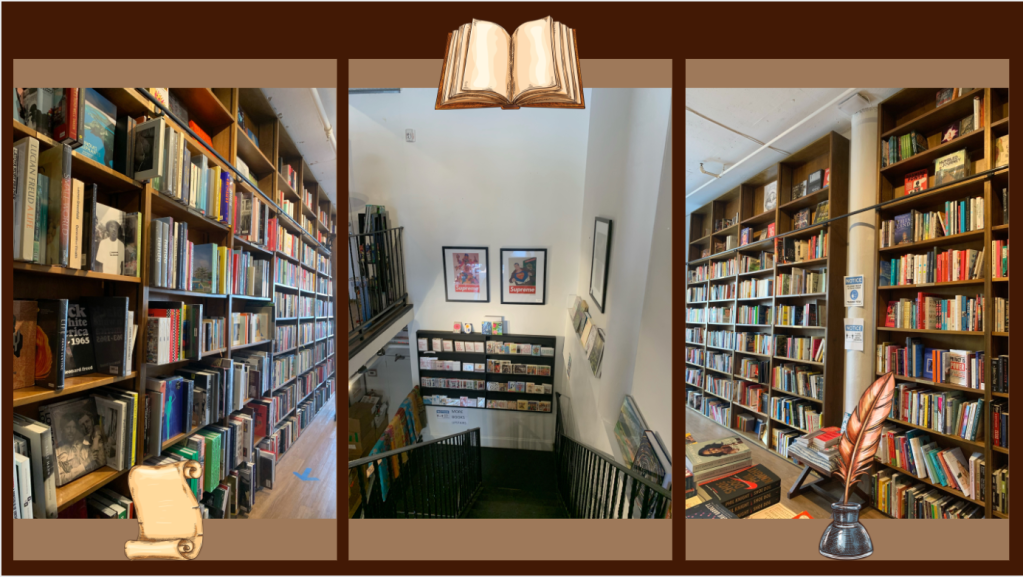STUDENT BIO

Amelia Raudales is a rising senior studying International Relations with certificates in Public Policy and Human Rights & Political Transitions. She loves to dedicate her time on philanthropic initiatives addressing social justice issues such as human trafficking, poverty alleviation, and gender discrimination.
GEOGRAPHY

Coconut Grove is known for its active pedestrian community as well as its open space architecture. While exploring this area, I saw multiple people walking their dogs, riding bikes, and even doing yoga in the middle of the CocoWalk mall. Cars even stopped for pedestrians while they crossed the street, an unheard-of norm in Kendall and Miami-Dade.

When it comes to its open landscape, we see modern and European influences. There were examples of relief art in the exterior walls of malls, buildings, and restaurants. Hidden behind the trees in the photo above, the walls characterized the modern expressionist architecture of Casa Batlló by Antoni Gaudí. There were also several walls lined with mosaic tiles.
One thing that particularly stood out to me was the use of plants with surrounding buildings. The implementation of vertical gardens is something I wish more cities did as they tackle air pollution, reduces energy usage, extends a roof’s life, as well as improve the mental health of constituents. I also admired how each information box was painted with bright colors and different designs. All of these beautification efforts help foster a good quality of life by promoting safety and well-being. This could be why there are so many active people in this neighborhood.
HISTORY

Established in 1873, Coconut Grove is Miami’s oldest neighborhood and it sits between Biscayne Bay and acres of green space. Its original residents were from Bahamian descent, just like many of the neighborhoods in Miami. The influence of Bahamian culture has been decreasing with the rise in development projects and gentrification.
Gentrification is defined as the process where natives of financially disadvantaged urban neighborhoods are forced out and displaced by richer residents and developers. It has been cited that West Grove was labeled “Colored Town” where Black residents were pushed into this neighborhood during the Jim Crow era. An article by Professor Anthony Alfieri even claimed that around 40% of the 3,000 residents live below poverty level.
Gentrification and mass eviction is no stranger to Miami, home to one of the worst income-inequalities cities in the nation. It was recorded that in Miami-Dade County, a family would need to work 126 hours per week with a minimum wage job just to afford a average prices two bedroom apartment. Lack of affordable housing, domestic violence rates, extremely high medical bills, and decreasing job opportunities makes it difficult for those pushed out of their homes to find a new place to live.
DEMOGRAPHICS
With over 21,493 residents, Coconut Grove is mainly made up of a highly educated white rich individuals. Over 33% of residents have a master’s degree or higher while 30% have a bachelor’s degree. 51% of the population is male and when it comes to racial diversity, 42% are White, 39% are Hispanic, and 15% are Black. Around 34% of residents make above $150,000 per year and 45% are over the age 45.

Laura has been a resident of Coconut Grove for over 17 years now. She is a White Hispanic woman who completed college in Argentina and works in the healthcare industry. She enjoys the fact that the neighborhood is pedestrian friendly and appreciates the proximity to so much greenspace and Biscayne Bay. However, she also acknowledges that Coconut Grove has a gentrification problem that needs to address.
LANDMARKS

Around this neighborhood, there was a plethora of historical plaques that gave visitors insight into the history of Coconut Grove. The Barnacle State Park houses the oldest home in Miami Dade County which was built in 1891. Its owner was Ralph Middleton Munroe, who grew up with a fascination with yachts and life by the sea. When he attended college at Columbia University, he came in contact with William Brickell who introduced him to Biscayne Bay. This influenced his move from Staten Island to Coconut Grove where he built his home and later the state park was established.
The Coconut Grove Library sits on McFarland Road, and it was built in the 1960s by T. Trip Russell. The original two-story library was founded in 1895 by teacher Mary Barr Munroe and the Pine Needles Club filled with donated books from Andrew Carnegie’s wife Louise. It sat on top of the Charles Peacock and Son’s grocery store until the land was donated by the husband of Mary Munroe, Kirk Munroe. On the left side of the building surrounded by an iron gate is the grave of Eva Munro who died in 1882. The library still sits by Biscayne Bay with red trimmings, oolite walls, and wide windows. Outside of their library they currently have SNAPs and Eviction appeal forms in English and Spanish to support those affected by COVID-19.
The Coconut Grove Playhouse was a theater constructed in 1927 by architect Richard Kiehnel and contractor Albert Peacock. In 1956 it was bought by oilman George Engle for $1 million ($47 million in 2017 adjusted for inflation) to be converted into a live theater. This was the second theater in east coast Florida with air conditioning and it closed in 2006. In 2018 was listed on the National Register of Historic Places.
GREEN
Peacock Park has 9 acres of open greenspace with facilities like a soccer field, a softball fields, and a boardwalk to the bay. It was first founded in 1883 on top of the land that was first home to the neighborhoods first hotel, Bay View Inn. The owners were Charles and Isabella Peacock who renamed the place to Peacock Inn and opened it for community gatherings in Miami. The inn hired Bahamians from Key West to work with the tropical plans and development.
The David Kennedy Park has 20 acres of green space and acts as a relaxing spot with trees, waterfront vistas, and open lawns. It is a dog and kid friendly park near the bay which provides a great spot for sunsets. They also have a lemonade truck in front of the park which has functioned since 1978.
Alice C. Wainwright Park is a dog friendly park that has a closed canopy forest with a Tropical Hardwood Hammock environment. The park was named after the first woman commissioner for the City of Miami. The Miami Rock Ridge and Brickell Hammock can be seen from the park although parts of the are closed off from public access like the hammock wilderness. There are restrooms available as well as a basketball court, BBQ area, and picnic shelters.
TRANSPORTATION
When driving to this neighborhood, the best place to park is the Coco Walk Garage. It sits right in walking distance of the Barnacle State Park, Books and Books, Peacock Park, and the marina to name a few places. Due to the fact that this is a pedestrian friendly neighborhood, everything is in close distance. There is a plethora of Citi Bikes in every corner and multiple sidewalks and crosswalks. In the 2017-18 and 2018-19 FY, the City of Miami also reviewed its trolley routes between Wynwood and Coconut Grove to provide ideal transportation efficiency.
FOOD
While walking along Peacock Park, I came across a Glass and Vine, a beautiful covered outdoor dining restaurant established in 2015. This is the perfect place for brunch with friends, lunch with live jazz, or dinner surrounded by fairy lights. They provide food items like oysters, antipasto, salads, and more.
Fireman Derek’s Bake Shop is the perfect stop after lunch. Started by retired fireman and Division-1 football player, Derek Kaplan started his bakeshop which uses fresh daily products. At 15-years-old, Kaplan began experimenting with baking, specifically Key Lime pies. As a firefighter, he would even provide lunch and dinner for 20 of his colleagues three times per week. Kaplan currently has a shop in Wynwood and Coconut Grove.
Barracuda Taphouse and Grill has been labeled a staple for this neighborhood since 1995. The restaurant is decorated with salvaged wood from an old Florida shrimp boat, a jukebox, and TVs to watch games. They are well known for their fresh fish options on garlic bread and craft beers for those over 21. Additionally, they provide live music and karaoke nights.
BUSINESSES

Books and Books is a locally owned independent neighborhood bookstore. It was founded in 1982 by Miami native and Co-founder of Miami Book Fair International, Mitchell Kaplan. The bookstore is also located next to Panther Coffee, a Miami based coffee company. When founders Leticia and Pollock visited Miami and noticed the lack of specialty coffee and plethora of Cuban styled coffee stores, they decided to start this café shop. They locally roast their coffee beans in Wynwood and Little Haiti, their first store and headquarters respectfully. Azul Coconut Grove is a designer resort wear retail company built in 1985. They first began as an underground punk rock store in Kendall Mall by a University of Miami graduate which then transitioned to a European fashion.
SUMMARY
After getting to know Coconut Grove, they definitely have pros and cons. As for its strengths, they have done an amazing job making it pedestrian friendly both in the transportation style and its beautification efforts. However, these efforts has also led to the mass eviction and displacement of native residents that were originally segregated there. While walking around there was not historical plaques that spoke about the racial history of this neighborhood like the ones we saw in our Downtown Miami Tour. More work has to be done to acknowledge its history by both the city and journalists.
CITATIONS
’20, Diego Duckenfield-Lopez. “Opinion: We Can’t Ignore the Destructive Effects of Gentrification in the Grove.” The Catalyst, recatalyst.org/774/opinion/opinion-we-cant-ignore-the-destructive-effects-of-gentrification-in-the-grove/#:~:text=Coconut%20Grove%20is%20changing%20rapidly,is%20gentrification%20in%20full%20force.
“Alice C. Wainwright Park in Coconut Grove, FL.” MiamiandBeaches.com, http://www.miamiandbeaches.com/thing-to-do/parks-recreation/alice-c-wainwright-park/2983.
“The Barnacle Historic State Park.” Florida State Parks, http://www.floridastateparks.org/parks-and-trails/barnacle-historic-state-park.
“Barracuda Taphouse & Grill.” Bar & Grill in Miami, barracuda-taphouse-grill.business.site/.
“Best Bakery in Miami – Shop Cakes: Fireman Derek’s Bake Shop.” Fireman Derek’s, 23 Feb. 2021, http://www.firemandereks.com/.
“Best Covered Outdoor Dining in Coconut Grove, FL.” Glass & Vine, 18 Feb. 2021, glassandvine.com/.
“The Causes of Homelessness.” Camillus House – The, http://www.camillus.org/aboutus/causes-of-homelessness/#.YIWhOn1Kjt0.
“Coconut Grove Branch Library.” Branch Coconut Grove – Miami-Dade Public Library System, mdpls.org/branch-coconut-grove.
“Coconut Grove Demographics and Statistics.” Niche, http://www.niche.com/places-to-live/n/coconut-grove-miami-fl/residents/.
“Dade County: Department of Cultural Affairs.” Miami, miamidadearts.org/coconut-grove-playhouse-updates.
“David Kennedy Park in Coconut Grove, FL.” MiamiandBeaches.com, http://www.miamiandbeaches.com/thing-to-do/parks-recreation/david-kennedy-park/2981.
Panther Coffee, http://www.panthercoffee.com/.
“Peacock Park in Coconut Grove, FL.” MiamiandBeaches.com, http://www.miamiandbeaches.com/thing-to-do/parks-recreation/peacock-park/2980.
Santos, Alex, and Alex Santos. “The Story of Books & Books.” Books & Books, 8 Aug. 2019, booksandbooks.com/the-story-of-books-books/#:~:text=Armed%20with%20all%20this%2C%20Mitchell,Florida%2C%20which%20is%20really%20Miami.
Trudie Carter | 30 June 2017 9 comments. “10 Plant-Covered Buildings That Point to a Greener Future.” Dezeen, 10 May 2019, http://www.dezeen.com/2017/06/30/10-plant-covered-buildings-point-greener-future-living-walls-roundup/.